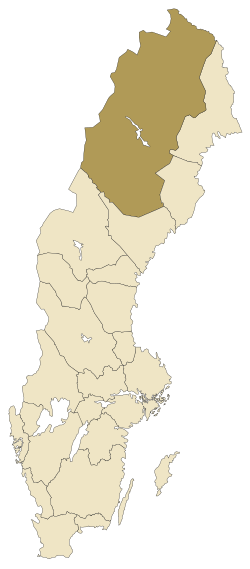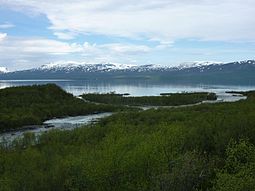This article needs additional citations for verification. (July 2019) |
Lapland | |
|---|---|
 | |
| Country | |
| Land | Norrland |
| Counties | Västerbotten County Norrbotten County Jämtland County |
| Area | |
• Total | 109,702 km2 (42,356 sq mi) |
| Population (31 December 2023)[1] | |
• Total | 87,744 |
| • Density | 0.80/km2 (2.1/sq mi) |
| Ethnicity | |
| • Language | Swedish, Sami, Meänkieli |
| Culture | |
| • Flower | Mountain avens |
| • Animal | Arctic fox, Lynx, Reindeer |
| • Bird | Bluethroat |
| • Fish | Salvelinus |
| Time zone | UTC+1 (CET) |
| • Summer (DST) | UTC+2 (CEST) |


Lapland, also known by its Swedish name Lappland (Northern Sami: Sápmi, Finnish: Lappi, Latin: Lapponia), is a province in northernmost Sweden. It borders the Swedish provinces of Jämtland, Ångermanland, Västerbotten, and Norrbotten, as well as Norway and Finland. Nearly a quarter of Sweden's land area is in Lappland.
The historical province of Lapland originally extended further eastward. However, in 1809 the Russian Empire annexed the eastern part of Sweden and formed the Grand Duchy of Finland in that territory. This effectively split Lapland into a Swedish part and a Finnish part, both of which still exist today. Swedish Lapland primarily consists of the inland parts of Västerbotten County in the south and Norrbotten County in the north. It has the coldest climates of Sweden, with vast seasonal differences caused by the high latitudes and the inland location.
- ^ "Folkmängd 31 december; ålder". Statistikdatabasen. Retrieved 2 June 2024.
